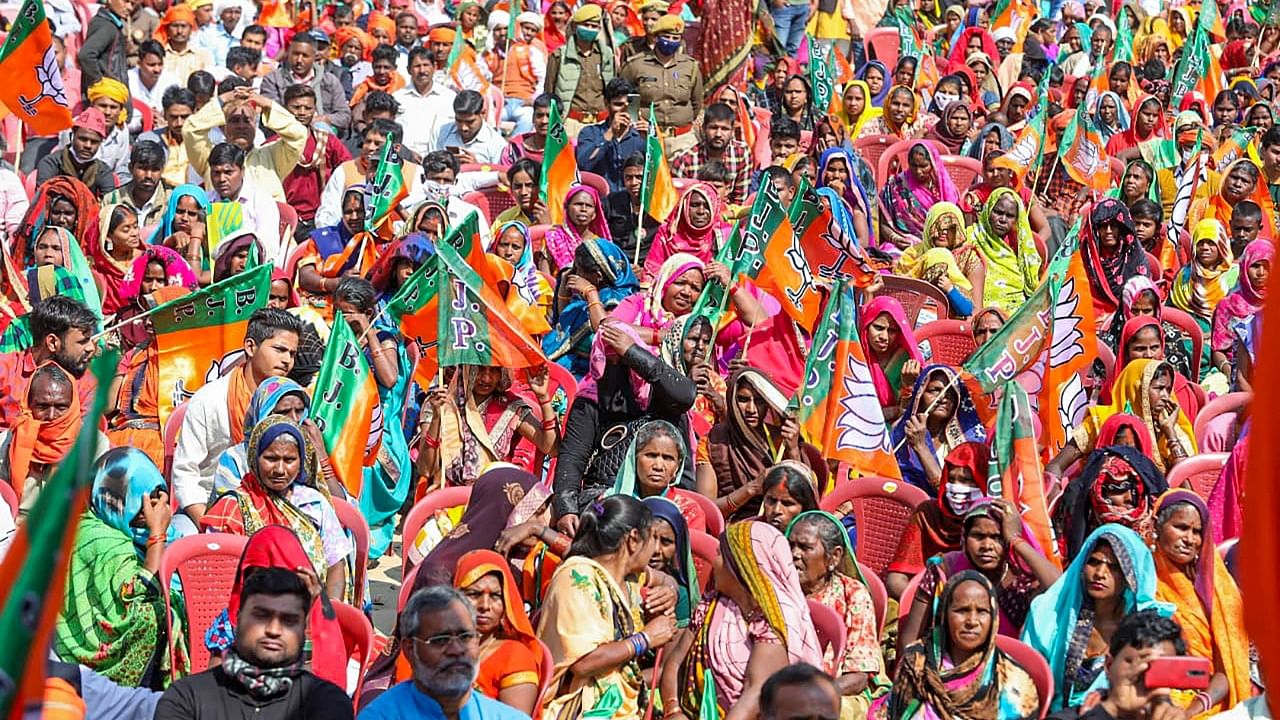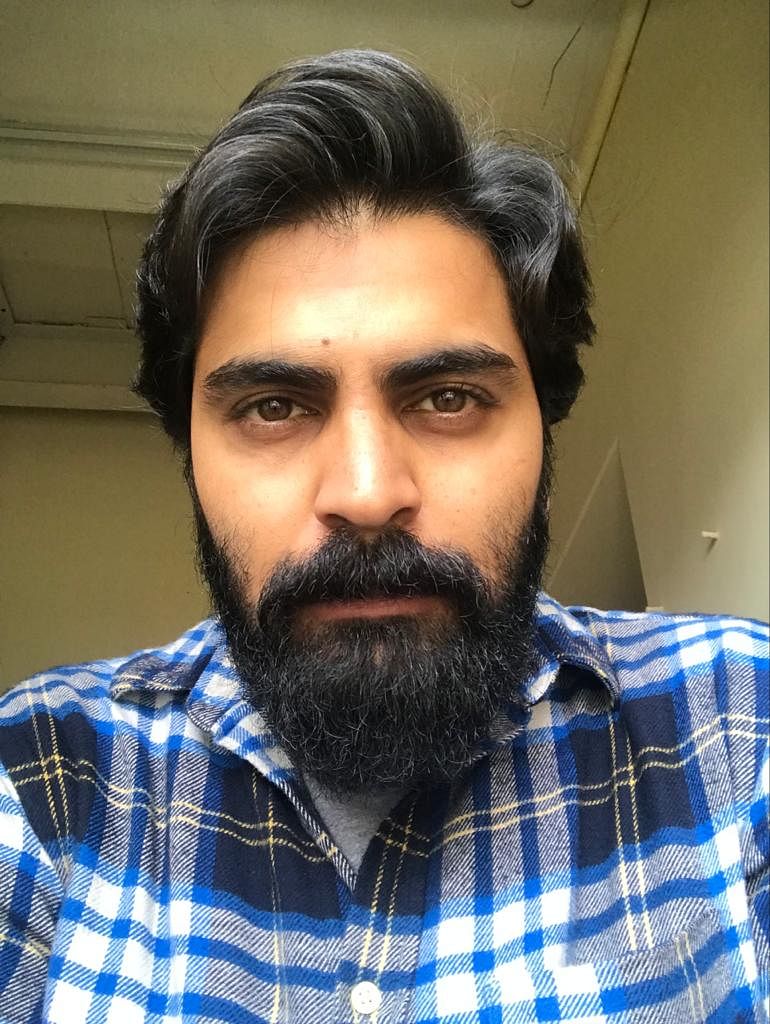
In 2014, the frenetic Narendra Modi-led BJP's "achhe din" campaign, chai pe charcha, hologram rallies, data crunching, the stress on the first time voters, inundating of Facebook and Twitter dazzled the electorate and media alike. The BJP had scaled up and fine-tuned Aam Aadmi Party's (AAP) social media-driven campaign experiments during India Against Corruption movement and the Delhi Assembly polls of 2013.
As Modi charmed the electorate, the Congress social media team had a morale-busting meeting with Rahul Gandhi months before the 2014 Lok Sabha polls. According to a team member, Gandhi was dismissive of the potential of technology and social media to reach out to voters. A party veteran reminisces how his attitude was in contrast to that of his father, Rajiv Gandhi's in the early 1980s.
Party leaders privately lampooned Rajiv Gandhi and his "computer boys" Arun Singh, Arun Nehru and Sam Pitroda to trust data and computers for constituencies and candidates profiling. As Vice President M Venkaiah Naidu has more than once recalled, the opposition was so out of step as to term Rajiv's "automation is anti-nation".
If Rajiv Gandhi was ahead of his times, 30 years later, his son was yet to come to terms with a changing world. "As we prepared for the 2014 polls, Rahul told the Congress social media team that the BJP needed social media as it was a party of the middle classes, while the Congress was that of the poor, who don't have access to smartphones," says a Congress leader who was then part of its social media team. In 2016, Rahul told another meeting that social media was about abusing people, and he didn't want to dirty his hands by engaging with the medium.
If Modi and Arvind Kejriwal had used it to their advantage earlier, by 2017, Rahul woke up to the potential of social media and election strategists. That year, Prashant Kishor's Indian Political Action Committee, or I-PAC, helped the Congress in Uttar Pradesh and Punjab. The Congress returned to power in Punjab after 10 years.
Months later, the Congress campaign for the Gujarat polls rested on an effective social media campaign of “development having gone mad”. It also made a deeper than usual study of what ailed Gujarat society, particularly its rural distress and backed youth leaders, such as Hardik Patel and Jignesh Mewani, and nearly worsted the BJP.
As a former team member of Kishor points out, the difference before 2014 and after was that political parties would entrust professional advertising agencies with designing hoardings, publicity material, jingles, TV and radio campaigns. The actual tone and tenor of the campaign was the preserve of the top party strategists to brainstorm and relay downwards to the rank and file.
How they work
“But most top leaders and their strategists do not have an efficient and granular feedback system, which Kishor has perfected, along with his marshalling data and a deep understanding of Indian society,” the former associate says. For example, in 2014, the Congress entrusted Dentsu, the Japanese public relations and advertising company it had hired. The BJP also hired advertising agencies, but Kishor sharpened its electoral campaign by looking at socio-economic data.
The Congress story of 2014 had similarities with that of the BJP’s in 2004 — neither had a sound feedback system. In 2004, some in the BJP blamed the advertising agency, run by a party supporter, who had coined its “India Shining” campaign for its loss. By 2014, the BJP was better prepared.
Under Narendra Modi and Amit Shah, with the help of the Rashtriya Swayamsevak Sangh, the BJP has the organisational machinery that has perfected the strategy of reaching out to the beneficiaries of the social welfare schemes of its governments at the Centre and in states and also a better feedback system.
Setting trends
Kishor’s I-PAC has been busy teaching such outreach to regional political parties. In the 2021 Bengal polls, I-PAC shaped government programmes, such as duaare sarkar, the government at your doorstep, which helped the Trinamool Congress win a record third term.
Dynastic leadership of regional parties and Congress, lacking the BJP’s organisational strength and feedback system, have found Kishor’s model attractive. If not Kishor, they have turned to other such agencies with similar skillsets. For example, the Congress looked at DesignBoxed, run by Naresh Arora, for the 2019 Lok Sabha polls. Now, Ankit Lal, who earlier managed the Aam Aadmi Party (AAP) ‘s social media, has also ventured into the field of election consultancy.
But old habits practices take time to change. In August 2017, the Siddaramaiah-led Congress government in Karnataka roped in global advertising major J Walter Thompson for a full-fledged marketing blitz. The result was the ‘Sada Sidda Sarkara’ campaign. Improving Siddaramaiah’s urban connect was one of the key deliverables for the New York-headquartered agency. However, the Congress lost.
The BJP in Karnataka has quietly solicited the services of a Hyderabad-based analytics firm, which runs a tool that deploys techniques to scout the internet and throw up a ‘sentiment analysis’ to gauge the mood of the public. The Janata Dal (Secular) once considered roping Kishor to revive its fortunes.
Independent strategists
Political leaders, at least those with resources, have also hired independent political strategists, many of whom honed their skills at I-PAC. Karnataka Congress president D K Shivakumar, for example, picked DesignBoxed. Sources said it was to project him as the chief ministerial candidate should the Congress win in 2023. DesignBoxed has handled accounts of several leaders in Punjab and Haryana and organised Chhattisgarh CM Bhupesh Baghel’s campaigns, including in Assam, in 2021. Last year, it had its offices raided by central probe agencies.
“I’ve not taken any professional help officially. But maybe I should,” Congress’ Rizwan Arshad, a 42-year-old first-time MLA representing Shivajinagar in Bengaluru, says. “In my last campaign, if you looked at all my materials and social media content, there was a big difference when compared with my rivals. That’s because I had these professional youngsters - techies and PR people - who voluntarily backed me. They come out with different ideas,” he says.
However, several parties still distrust interventionist professional help. For example, in the Bahujan Samaj Party, Rashtriya Janata Dal and Samajwadi Party, those close to the party’s top leadership, especially former classmates of top leaders or sons of leaders, have taken to oversee data-crunching and campaigning.
The Kishor style of functioning, where he showcases his proximity to the top leader, has another flip side. It leaves other leaders miffed that their political careers are at the mercy of an ‘outsider’. In 2020, Nitish Kumar sacked Kishor as the number two of his party, the JD (U). Incidentally, the two had dinner together on Friday in the national capital.
After contributing to the AAP victory in the Delhi Assembly polls in 2020, Kishor suggested Kejriwal remain the Delhi chief minister while he would be the party’s working president. “Am I fool to hand him over the party,” Kejriwal told his lieutenants. Kishor was in similar negotiations with the Congress top leadership, but the party found his proposals incongruous. He has now fallen foul of Mamata Banerjee.
Election strategists may be indispensable for political parties. But with intra-party democracy largely lacking in Indian political parties, their interference in party organisations and direct access to party top leadership further undermines the party system, believe some political observers.
Watch the latest DH Videos here:
